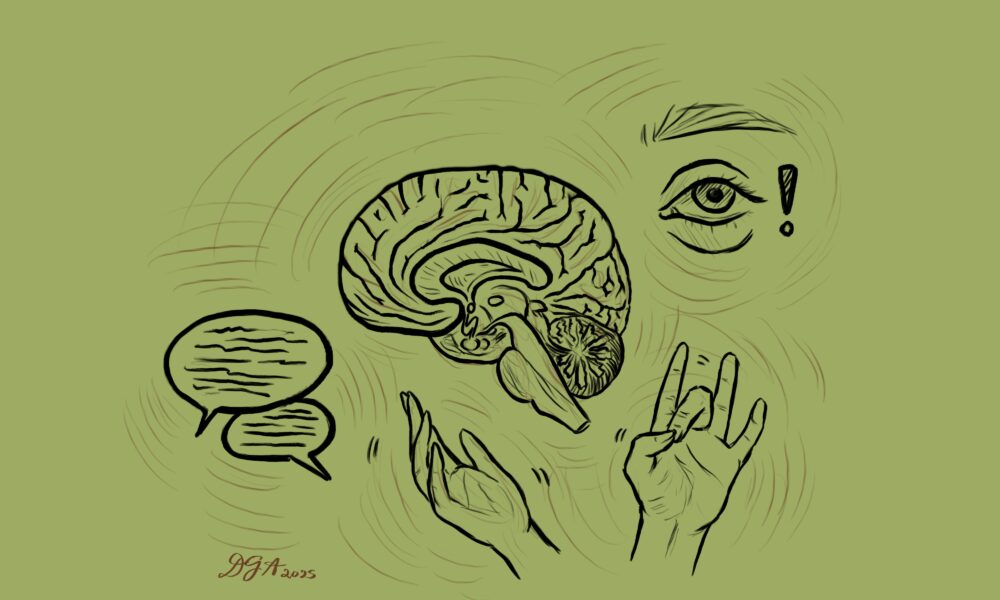Autism, also known as autism spectrum disorder, affects approximately one in 100 children worldwide. It constitutes a diverse group of brain development conditions that impact how individuals perceive and socialize with others, often leading to differences in social interaction and communication in comparison to their neurotypical peers.
One of the hallmark features of autism spectrum disorder is the presence of restrictive and repetitive behaviours and interests (RRBIs).
According to Stephanie Lung, a PhD candidate in McGill’s Department of Educational and Counselling Psychology, one characteristic of RRBIs is repetitive motor behaviour, such as hand flapping, finger flicking, and feet flexing.
“Another characteristic of RRBIs is insistence on sameness. This can translate into behaviours like eating the same food every day, having to sit in the same room every single time, or sticking to a specific routine. Any changes to the routine can be overwhelming,” Lung said in an interview with The Tribune. “The third characteristic is exceptional knowledge in a very specific area that could appear developmentally inappropriate.”
Interestingly, RRBIs serve regulatory purposes for autistic people. Present from early childhood, RRBIs are associated with developmental benefits, and their continued presence beyond early childhood suggests that they may serve adaptive functions.
To gain a deeper understanding of RRBIs, Lung and her team recently conducted a study that examined the current literature and investigated the primary functions of RRBIs in autism.
Drawing from key evidence in existing literature, Lung found that RRBIs serve several important functions for autistic individuals, one of which is sensory regulation. Compared to non-autistic populations, autistic people are more sensitive to changes in environmental stimuli.
“For example, they may be exceptionally sensitive to bright light or loud noises. If the clothes are not soft enough, they will not wear them. If there is a droplet of water on their clothes, they have to pick it out right away,” Lung explained.
Due to these sensory sensitivities, the study highlighted a need to provide a calming environment for autistic children so that they can optimally learn and process information. A Snoezelen room, for example, provides an environment with light, sound, and touch stimuli designed to help reduce agitation among people with autism.
Another important function of RRBIs is to manage elevated levels of anxiety, which are common for autistic people. Anxiety in autism is often associated with unpredictability and sensory processing issues, such as loud noises, physical touch, and specific food textures or tastes. Repetitive motor behaviours can serve as a calming strategy, helping to temporarily disconnect autistic individuals from unpleasant sensory experiences and alleviate anxiety related to sensory overload.
Furthermore, the study suggests that RRBIs, particularly insistence on sameness, play a role in establishing familiarity in unpredictable surroundings. The adherence to a known routine or ritual reintroduces certainty to a changing environment, thereby alleviating feelings of fear and anxiety associated with the unknown and chaos.
Lung’s research sheds light on the constructive characteristics of RRBIs, contrasting with the broader literature that often focuses on their interfering impact. The identified functions of RRBIs can serve as criteria for evaluating the usefulness and effectiveness of existing behavioural interventions for autism.
Although Lung’s paper strives to be systematic and comprehensive, it primarily includes studies from Europe and North America, potentially limiting the cultural representativeness of perspectives on RRBIs. Additionally, the exclusion of non-English studies restricts the inclusion of non-English-speaking autistic experiences.
“Future research should also explore how these behaviours vary across different age groups, life circumstances, and cultures,” Lung added.






